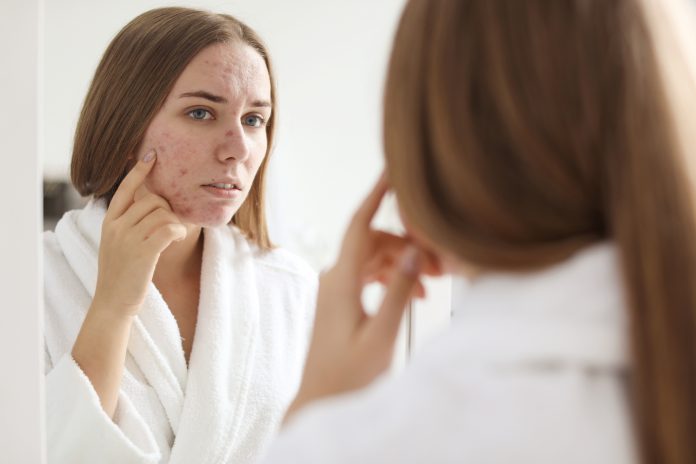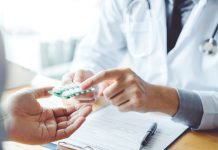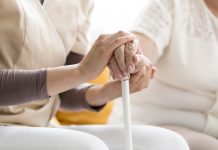Dr Deborah Lee, Dr Fox Online Pharmacy, tells us all about brimonidine gel as an effective treatment for acne rosacea
If you suffer from acne rosacea, you will know all about the embarrassment of constant facial flushing and redness. Great news then – an effective treatment does exist, known as brimonidine tartrate gel – brand name – Mirvaso Gel.
- What is brimonidine gel?
- How does it work?
- Is it effective?
- How should it be used?
Read on and find out.
What is brimonidine gel?
Brimonidine gel is an aqueous gel that contains 3.3 mg of brimonidine per 1 gram of gel. It is a licensed product for the treatment of facial flushing in adults with acne rosacea.
How does it work?
Brimonidine tartrate is a type of medication that works by blocking specific receptors found in blood vessel walls. Receptors are just shapes found in cell walls – a bit like the sites where jigsaw puzzle pieces fit together. At a receptor site, a molecule can click into it, and cause something to happen.
Once the gel is applied to the skin, the brimonidine diffuses through the skin and enters the cells. When brimonidine clicks onto the alpha-2 adrenergic receptor, it inhibits negative feedback of the neurotransmitter, noradrenaline, causing local concentrations to increase. This causes small blood vessels in the skin to shrink.
When blood vessels near the skin surface constrict, they have a smaller diameter, so that blood flow through them is reduced. This means the skin appears paler – the skin is less red and less flushed.
Is it effective?
The National Institute of Health and Care Excellence (NICE) recommends the use of brimonidine gel for acne rosacea sufferers.
NICE cite two randomised controlled trials, in which the use of brimonidine gel was found to be superior to placebo. In one trial, the success rate with brimonidine gel was quoted as 31.5%, as compared to 10.9% for the placebo. In the second trial, the success rate was said to be 25.4% for the brimonidine gel, as compared to 9.2% for the placebo. These results were statistically significant.
Benefits were seen within 30-minutes of applying the gel, with a maximal effect after 3-hours. The effects lasted for 6-hours or more. In fact, there was still a visible effect from the use of the gel after 12-hours. There was also no increase in the number of inflammatory lesions found on the face, and no worsening of telangiectasia (small, dilated blood vessels).
In addition, patients were more likely to feel satisfied with treatment after using the brimonidine gel, than after using the placebo.
How should it be used?
Brimonidine gel should be applied to clean dry skin before other rosacea treatments are applied, and before any makeup or sun cream.
One small pea-sized amount of gel should be applied to each of the 5 regions of the face – forehead, nose, two cheeks and the chin. It should be smeared across the skin in a thin layer taking care to avoid the eyes and the mucous membranes such as the inside of the nose and mouth. As an alpha-blocker, if this is absorbed in too high a dose into the bloodstream, it could cause low blood pressure, so apply the gel with care.
After application, hands should be washed. The gel takes a few minutes to dry out on the skin. Other rosacea treatments and sunscreen can be applied to the skin when it has dried.
Brimonidine is only applied to the skin once a day, usually first thing in the morning.
Side effects
The most common side effects from the application of brimonidine gel to the face are flushing, itching, and stinging or burning. These occur in between 1.2% and 3.3% of users.
Other side effects can be present. Flushing is said to occur in 9.1% of users, and worsening of rosacea, in 3.6%. Contact dermatitis is seen in 2.2%.
Who is not suitable?
Because it causes vasoconstriction and hence reduces blood flow, brimonidine gel is not suitable for those with heart disease, orthostatic hypotension (low blood pressure on standing), or Raynaud’s disease.
There are no studies to show if brimonidine gel is safe in pregnancy or breastfeeding, in children, or the elderly.
Alternatives
There are currently no other topical treatments that are likely to help facial flushing. As an alternative, occasionally, beta-blockers or clonidine can be taken by mouth.
Brimonidine can be used in addition to the other common rosacea treatments such as metronidazole gel, or azelaic acid, and oral antibiotics such as doxycycline.
How to obtain brimonidine gel
Brimonidine gel can be prescribed by your GP or a Consultant Dermatologist. It can also be prescribed and purchased from online pharmacies.
Final thoughts
The psychosocial effects of living with rosacea are immense. For rosacea sufferers, concern about their physical appearance has a major effect on their mental health, resulting in loss of self-confidence, loss of self-esteem, anxiety and depression.
The National Rosacea Society reported that 50% of rosacea sufferers feel having rosacea has robbed them of having a happy life.
If brimonidine gel can help reduce the stigma of reddening of the face and facial flushing, this has to be a welcome option.
For more information
DermNet NZ – Brimonidine
The National Rosacea Society – Coping with Rosacea
References
https://www.nice.org.uk/advice/esnm43/chapter/full-evidence-summary
https://dermnetnz.org/topics/brimonidine/








